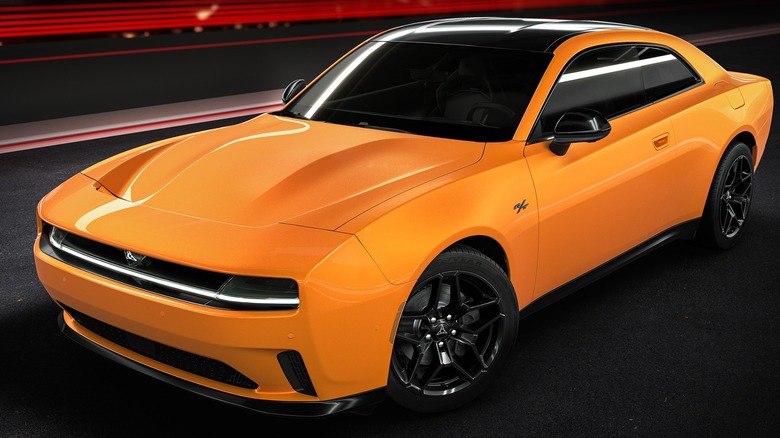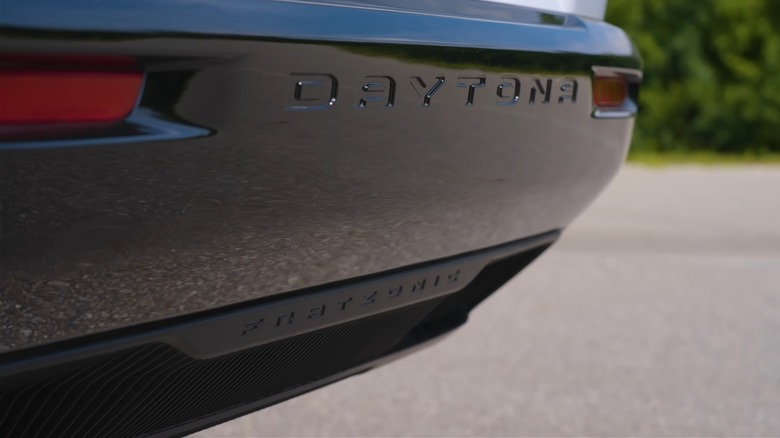What Is Dodge's Fratzonic Chambered Exhaust And How Does It Work?
Famed Top Gear host Jeremy Clarkson once noted about electric vehicles, "I never want to drive a car that hasn't got a nice sound coming out of the front or the back." Not only are EVs too quiet for V8 enthusiasts, but have proved to be dangerous for pedestrians who couldn't hear them. A study of traffic incidents in the U.K. found that pedestrians are twice as likely to get struck by an electric car than a gas powered one, per the Journal of Epidemiology & Community Health. Fortunately, automakers have added noise equipment to EVs in the form of a sound file — now a regulatory requirement in Europe and the U.S.
With skepticism from fans of traditional combustion engines, Dodge knew its upcoming electric Charger Daytona — billed as "The World's Only Electric Muscle Car" —would have to deliver something special to win drivers over. After all, just after Dodge revealed the new Challenger, fans couldn't stop arguing. What if an EV sounded like it had a massive V8 under the hood?
The Fratzonic Chambered Exhaust is the American automaker's appeal to classic muscle car enthusiasts, including powerful audio components tied directly to driver input. Essentially, the automaker has developed a sound system that makes its EV audibly intimidating. In terms of actual performance, you'd be surprised how fast the new Dodge Charger Daytona is versus a Hellcat. With the Fratzonic Chambered Exhaust system, this new breed of muscle car might offer the full package, for those drivers still on the fence about performance EVs.
How does this new exhaust audio technology work?
The Fratzonic Chambered Exhaust utilizes several components to make sounds that correspond to driver action like acceleration, idling, revving, and even Daytona's PowerShot feature. Dodge uses powerful transducers (speakers), but incorporates a unique cabinet to manipulate the sound. As Motor1.com put it, "speakers are installed in an exhaust-like chamber specifically designed to make noise, or more specifically, shape it."
What emanates out of the car is a genuine throaty roar that could have motorists and pedestrians convinced the Daytona features a gas-powered V8. Great sound or not, the system wouldn't fool anyone if it didn't match up with what the driver was doing behind the wheel. Dodge has engineered a series of sensors that consider pedal positioning, how fast the Daytona is traveling, and moments when output is pushed, to create realistic audio feedback.
For example, Stellantis notes that the "intensity of [the] Fratzonic Chambered Exhaust [is] tied to higher performance: Drag, Drift, Donut and Track Modes deliver an elevated acoustic output."
Not only do bystanders hear the robust exhaust tones, but the Fratzonic Chambered Exhaust system also provides the driver with feedback. Behind the wheel of Daytona, you'll not only hear a phantom V8, but you'll also feel it as well. According to Ars Technica, the technology also "uses elastomeric bushings to transmit vibrations through the chassis." With the new Charger creating an EV category all its own, Dodge just set the bar for muscle car EVs, and it'll be interesting to see its effects on the auto industry.

